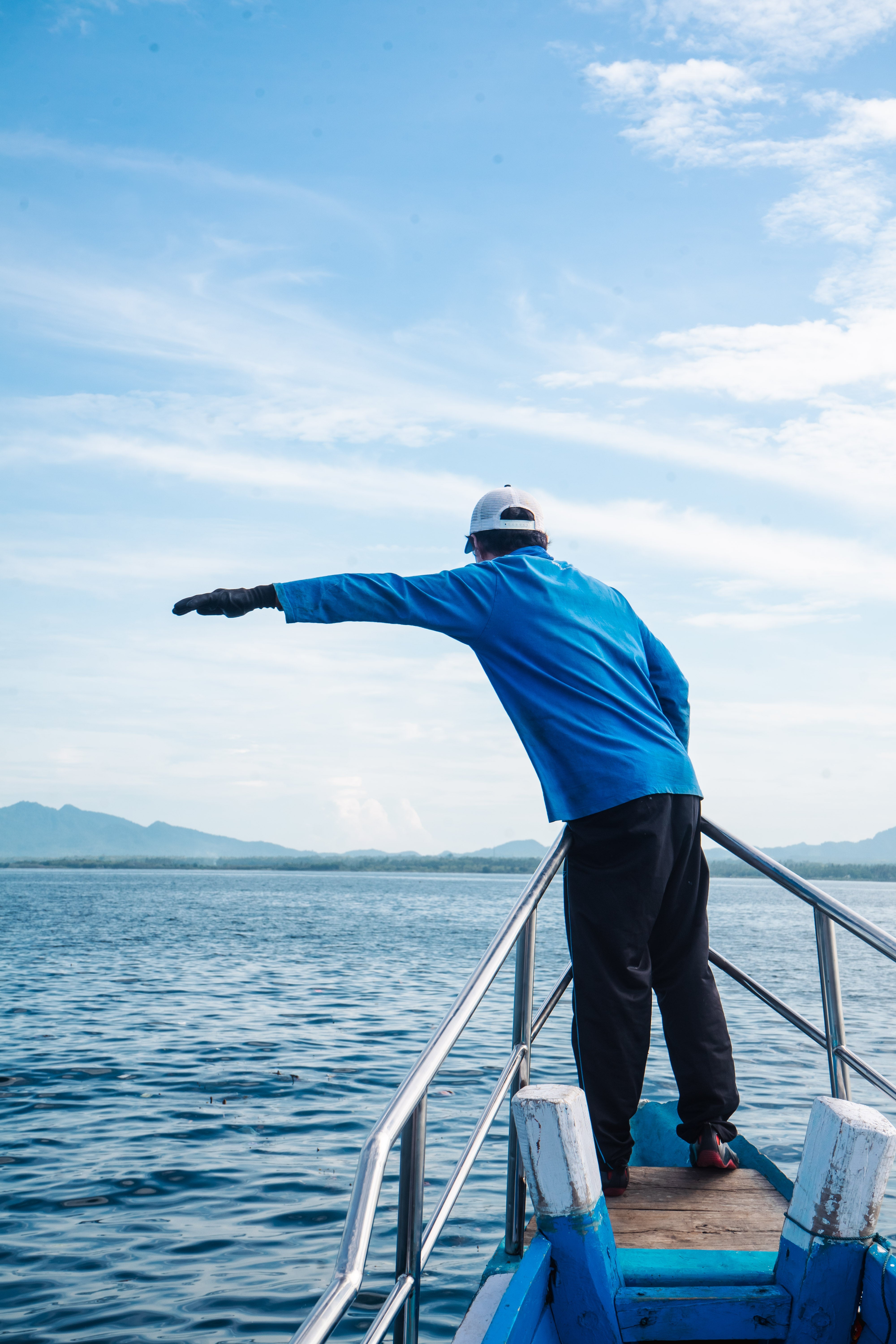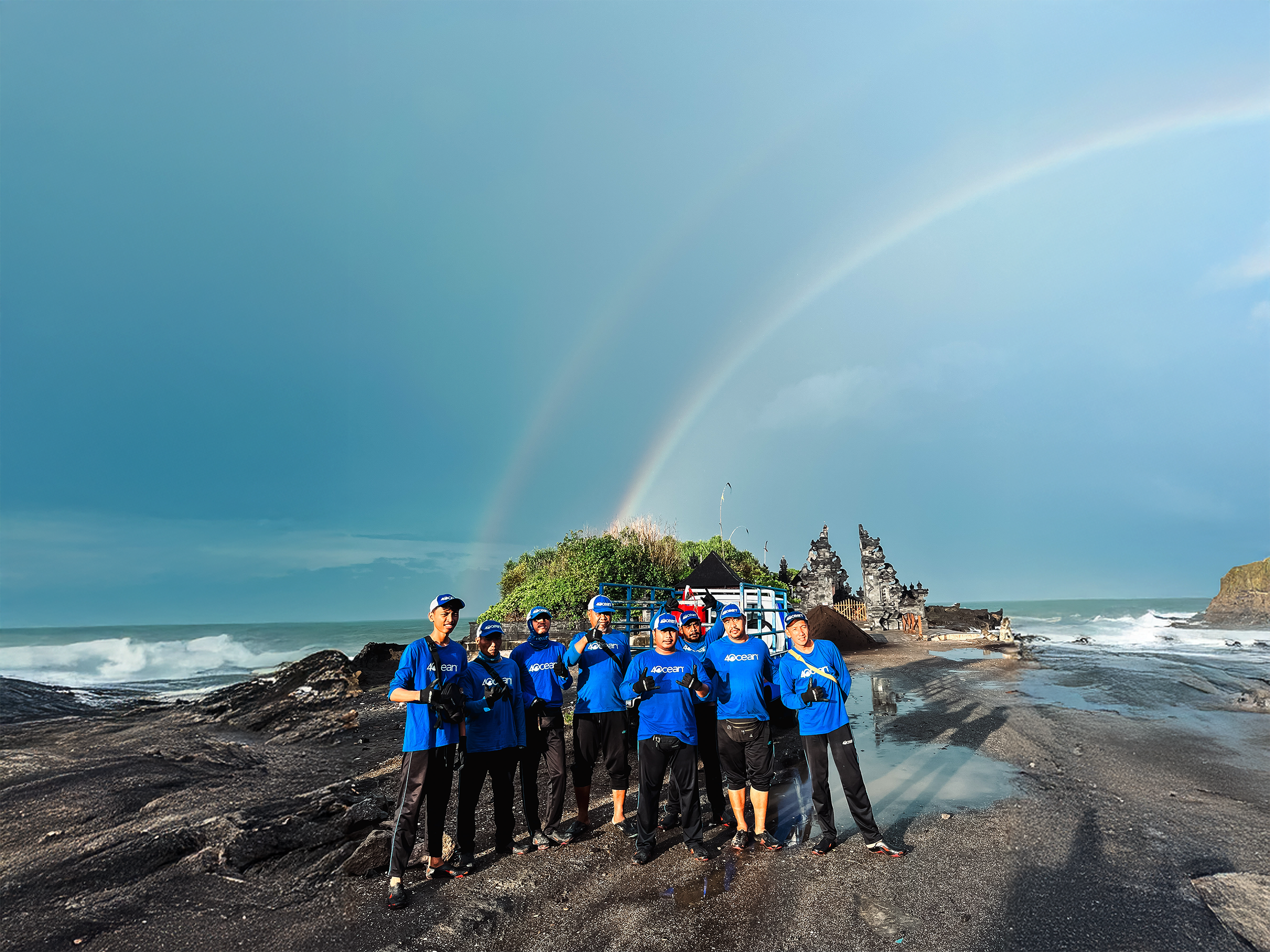5 MIN READ
04-20-2025
Trapped Beneath the Waves: A Massive Cleanup in Candikusuma
Ahmad Fasta, 4ocean Jembrana Content Correspondent
The morning in Pengambengan started like many others. Our crew gathered at the dock, under soft light and calm skies, preparing gear, checking boats, and reviewing the day's plan. The sea was quiet—almost serene—but that calm would soon be replaced by something far more urgent.
For days, we had been tracking debris movements, and our predictions led us west. After two hours of navigating choppy waters, it was Unit 09—the Dugong, our newest nearshore vessel—that first spotted the unmistakable signs. Plastic waste covered the surface of the ocean near Candikusuma, twisting in currents, floating alongside birds and fish. It was clear: we had a monumental task ahead.
What we saw wasn’t just pollution; it was an ecosystem warped by human waste. Birds perched on waterlogged trash, fish swam beneath sun-bleached bags. But as the crew surveyed the scene, the true scale of the disaster revealed itself. The surface was littered with everything from foam to plastic bottles, bags, and ropes, drifting aimlessly in the water. It was more than an eyesore—it was a sign of a deep environmental crisis.
Our team worked quickly. Sugik, one of our crew members, spotted the first massive accumulation of debris. It was a tangled mess—dolls, PET bottles, ropes, plastic tarps, and more. We collected the waste methodically, filling sacks one after another, but the ocean seemed endless.
Over the course of the day, we collected 7,279.56 pounds of marine debris.
Breakdown by boat:
- Unit 01: 607.94 lbs (14 sacks)
- Unit 02: 1,096.66 lbs (21 sacks)
- Unit 04: 2,737.64 lbs (51 sacks)
- Unit 09 – The Dugong: 2,837.32 lbs (52 sacks)
Among the debris were everyday items we all recognize—plastic bags, straws, bottles—but also more alarming items, such as tarps and tangled ropes, all silently threatening the health of the ocean. And amidst it all, the crew worked tirelessly, collecting the trash, maneuvering through the waste, and ensuring every item was removed from the water.
The impact of plastic pollution is profound. Beyond being an eyesore, these materials are deadly. Marine life often mistakes plastic for food, leading to injury or death. Turtles, fish, and birds are particularly vulnerable to ingesting or becoming entangled in this debris. The longer we wait, the greater the devastation.
While this cleanup was significant, it was just another day in an ongoing battle. Nearly every cleanup reveals how much more work remains. The ocean is fighting for its survival, and so should we.

What began under clear skies quickly shifted. By noon, heavy winds rolled in, and the waves grew larger. But the team didn’t slow down. Trained for unpredictability, we pressed on—determined to finish the job and clear the ocean of as much waste as possible.
This cleanup was one of the first led by The Dugong, Unit 09—a vessel designed with a singular purpose: tackling nearshore pollution and supporting large-scale cleanup missions. Supported by the 4ocean Foundation, The Dugong's robust design allowed us to cover more ground, work efficiently, and ensure that as much debris as possible was removed from the water.
The ocean isn’t just fighting pollution; it’s fighting for survival. If we don’t act now, future generations may only know the ocean through stories.
This mission saved lives, but how many more are still hidden beneath the waves, waiting for us to act?
Let’s make sure we’re ready.













